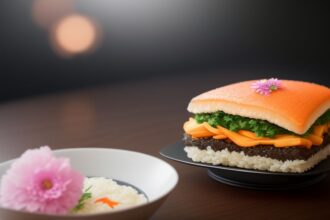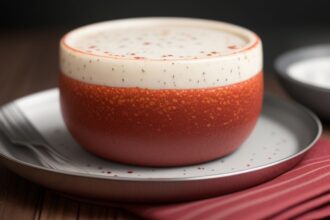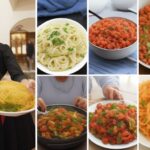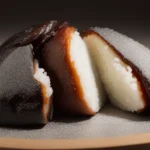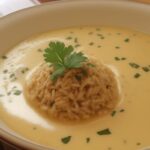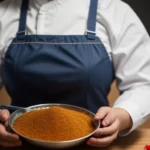Unraveling the Secrets of French Cuisine: Techniques and Ingredients
French cuisine is renowned worldwide for its exquisite taste, elegant presentation, and rich culinary traditions. From classic dishes like coq au vin and ratatouille to delicate pastries like croissants and macarons, French cuisine embodies sophistication and a deep appreciation for quality ingredients and precise techniques. In this article, we will delve into the secrets of French cuisine, exploring the techniques and ingredients that make it so unique and beloved by food enthusiasts around the globe.
1. The Foundation of French Cuisine: The Five Mother Sauces
French cuisine is built upon the foundation of five mother sauces, which serve as the basis for countless other sauces and dishes. These mother sauces include Béchamel, Velouté, Espagnole, Sauce Tomat, and Hollandaise. Each sauce has its own unique flavor profile and uses, providing a versatile toolkit for French chefs to create a wide variety of dishes.
2. The Art of Mirepoix
Mirepoix is a classic combination of diced onions, carrots, and celery that serves as the flavor base for many French dishes. This aromatic blend of vegetables adds depth and richness to soups, stews, sauces, and braises, creating a solid foundation for building layers of flavor in a dish.
3. Butter, Butter, and More Butter
French cuisine is known for its generous use of butter, which adds richness, flavor, and creaminess to dishes. From beurre blanc sauces to croissants, butter is a staple ingredient in French cooking. The high-quality butter produced in France, known for its rich and creamy taste, is a key component of many traditional French dishes.
4. The Importance of Quality Ingredients
French cuisine places a strong emphasis on using high-quality, fresh ingredients to create dishes that are full of flavor and texture. From locally sourced produce and meats to artisanal cheeses and wines, French chefs prioritize using the best ingredients available to create dishes that are both delicious and visually stunning.
5. The Versatility of Herbs and Spices
Herbs and spices play a crucial role in French cuisine, adding depth, complexity, and freshness to dishes. Classic herbs like parsley, thyme, and tarragon are commonly used in French cooking, as well as spices like cinnamon, nutmeg, and cloves. The careful balance of herbs and spices is essential to creating the distinct flavors of French dishes.
6. Mastering the Art of Knife Skills
French chefs are known for their impeccable knife skills, which allow them to precisely and efficiently prepare ingredients for cooking. From julienning vegetables to filleting fish, mastering the art of knife skills is essential for creating beautiful and uniform cuts that enhance the presentation and texture of dishes.
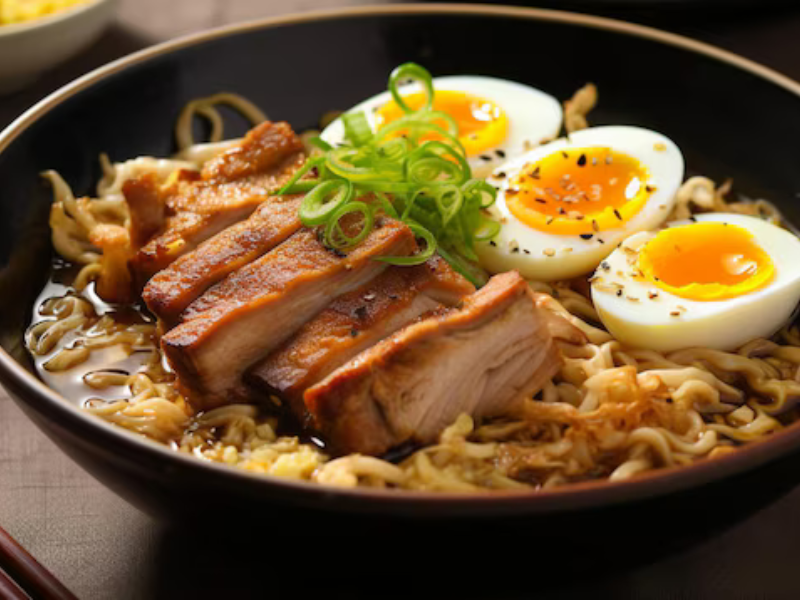
7. The Technique of Braising
Braising is a classic French cooking technique that involves searing meat or vegetables in fat, then simmering them slowly in liquid until tender. This method of cooking infuses dishes with rich, complex flavors and produces tender and succulent results. Dishes like Coq au Vin and Beef Bourguignon are classic examples of braised dishes in French cuisine.
8. The Art of Saucing
Sauces are an essential element of French cuisine, adding depth, flavor, and moisture to dishes. From classic demi-glace and velouté to modern reductions and emulsions, French chefs are masters at creating a wide variety of sauces to complement and enhance their dishes. The art of saucing requires skill, precision, and a keen understanding of flavor balance.
9. The Beauty of Baking
French pastry and baking techniques are renowned for their precision, creativity, and artistry. From flaky croissants to delicate macarons, French desserts are a feast for the senses. The use of high-quality ingredients, like butter, eggs, flour, and sugar, combined with meticulous attention to detail, results in pastries that are not only delicious but visually stunning as well.
10. The Influence of Regional Cuisine
France is a country rich in culinary diversity, with each region boasting its own unique cuisine and culinary traditions. From the seafood-centric dishes of Brittany to the hearty cassoulet of the South West, the regional variations of French cuisine showcase the country’s diverse landscapes, climates, and culinary heritage. Exploring regional cuisine is an exciting way to uncover the diverse flavors and ingredients that make French cuisine so special.
11. Embracing Seasonal Produce
French cuisine places a strong emphasis on using seasonal produce to create dishes that are fresh, flavorful, and in harmony with the natural world. By sourcing ingredients at their peak freshness, French chefs are able to highlight the natural flavors and textures of fruits, vegetables, and herbs in their dishes. Embracing seasonal produce not only enhances the taste of dishes but also supports local farmers and promotes sustainability.
12. The Role of Wine in French Cuisine
Wine is an integral part of French cuisine, with each region producing its own unique varietals that pair perfectly with local dishes. From Champagne in the North to Bordeaux in the Southwest, French wines are celebrated for their complexity, elegance, and versatility. The art of wine pairing is a cherished tradition in French cooking, with chefs carefully selecting wines that complement and enhance the flavors of their dishes.
13. The Timeless Elegance of French Dining
French dining is characterized by its timeless elegance, attention to detail, and love of food and wine. From leisurely multi-course meals to relaxed café lunches, French dining traditions emphasize the importance of savoring and enjoying good food in the company of family and friends. The art of dining in France is a celebration of life, culture, and the pleasures of the table.
14. The Art of Presentation
French cuisine is not only about taste but also about presentation, with dishes meticulously arranged and garnished to create a visually stunning experience. From intricate pastries to perfectly plated main courses, French chefs pay careful attention to every detail of a dish, from color and texture to shape and balance. The art of presentation in French cuisine transforms a meal into a sensory feast that delights the eyes as much as the palate.
15. The Joy of Cooking
At its core, French cuisine is about joy, creativity, and passion for food. French chefs take pride in their craft, using their skills and expertise to create dishes that are not only delicious but also beautiful and inspiring. The joy of cooking and sharing food with others is a central tenet of French cuisine, fostering a sense of community, connection, and appreciation for the simple pleasures of life.
In conclusion,
Unraveling the secrets of French cuisine reveals a rich tapestry of techniques, ingredients, and traditions that have been passed down through generations of chefs and cooks. From the classic mother sauces to the art of saucing, braising, and baking, French cuisine embodies a deep respect for quality ingredients, precise techniques, and a love of good food. By exploring the techniques and ingredients that define French cuisine, we can gain a deeper appreciation for the culinary heritage and artistic expression that make French cooking truly special.
FAQs about “Unraveling the Secrets of French Cuisine: Techniques and Ingredients”
- What makes “Unraveling the Secrets of French Cuisine: Techniques and Ingredients” a valuable resource for cooking enthusiasts? This book offers an in-depth exploration of the techniques and ingredients that define French cuisine, providing readers with the knowledge and skills to master the art of French cooking.
- Which aspects of French cuisine are covered in this book? “Unraveling the Secrets of French Cuisine” covers a wide range of aspects of French cuisine, including classic cooking techniques, essential ingredients, regional specialties, and the cultural significance of food in French society.
- Are specific French cooking techniques highlighted in this book? Yes, this book highlights a variety of French cooking techniques, such as sautéing, braising, roasting, and baking, as well as classic sauce-making methods like béchamel, velouté, and hollandaise.
- How does this book delve into the secrets of French ingredients? This book delves into the secrets of French ingredients by exploring the importance of quality, seasonality, and sourcing in French cooking. It showcases essential ingredients like butter, cheese, herbs, and produce, as well as specialty items like truffles and foie gras.
- Can readers expect to gain practical skills and tips for mastering French cuisine in this book? Absolutely! “Unraveling the Secrets of French Cuisine” provides readers with practical skills, techniques, and tips for mastering French cooking at home. Whether you’re a beginner or an experienced chef, you’ll find valuable insights and inspiration to elevate your culinary repertoire.
Advantages:
- Intriguing language: The title “Unraveling the Secrets of French Cuisine: Techniques and Ingredients” uses evocative terms to suggest uncovering hidden knowledge and insights into the culinary traditions of France, immediately capturing the reader’s interest.
- Educational value: By focusing on techniques and ingredients, the title promises readers a deeper understanding of French cooking methods, flavor profiles, and culinary traditions, providing them with practical knowledge to enhance their cooking skills.
- Gastronomic exploration: Readers can anticipate learning about a variety of French dishes, ingredients, and cooking techniques, providing them with a comprehensive overview of the diverse culinary landscape of France.
- Practicality: By featuring techniques and ingredients, the title appeals to readers interested in mastering the art of French cooking, providing them with tips, recipes, and insights to recreate the flavors of France in their own kitchens.
- Inspiration for cooking: The title may inspire readers to experiment with French cooking techniques and ingredients, encouraging culinary exploration and creativity.
Disadvantages:
- Lack of specificity: While techniques and ingredients are mentioned, the title does not specify which techniques or ingredients will be explored or which French dishes will be featured, leaving readers uncertain about the scope of the content.
- Potential oversimplification: Focusing solely on techniques and ingredients may oversimplify the richness and complexity of French culinary traditions, overlooking cultural nuances and regional specialties.
- Accessibility of ingredients: Some traditional French dishes may require specific ingredients that are difficult to find outside of France or major culinary hubs, limiting the practicality of the recipes for some readers.
- Dietary restrictions: French cuisine often includes ingredients like butter, cream, and animal products, which may not be suitable for individuals with dietary restrictions or preferences, potentially alienating some readers.
- Cultural appropriation: Without proper context and understanding, celebrating French cooking techniques and ingredients could risk appropriating cultural elements without acknowledging their significance or respecting their origins.



